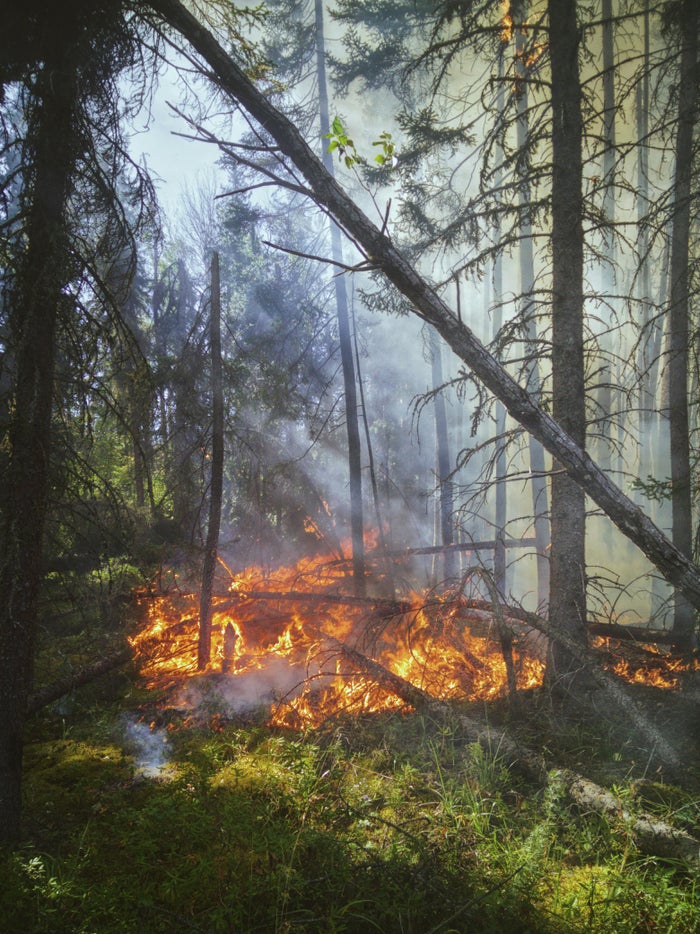
With climate concern rising across the globe, Canadians are faced with the reality that their home insurance may not be as stable as it once was. According to the Insurance Bureau of Canada, extreme weather events in 2024 led to more than $8.5 billion in insured losses, making it the costliest year for insured damage in Canada's history.
From the raging Canadian wildfires in Alberta to the flooding in Ontario, climate-caused disasters are becoming more and more common. It’s becoming increasingly important that Canadians review their insurance policies and understand how they’re protected.
Reviewing Your Policy
Take a look at your insurance policy to see not only what’s included, but what’s excluded. Many weather-related threats are not covered by default, including important coverage from things like floods. Overland flood coverage is often not included in insurance policies, yet flooding is the most frequently occurring and damaging type of natural disaster in Canada. From 2014 to 2023, catastrophic flooding caused an average of around $800 million in insured losses per year.
Certain issues may also be denied if the insurer determines the cause of the issue was long-term wear or lack of maintenance, even if the damage arises from a weather-related issue. There may also be limits on claims depending on certain factors, for example, water damage claims may be limited depending on where the water came from.
Deductibles & Types of Damage
For many home insurance policies, the amount you have to pay out-of-pocket varies depending on the cause of the damage. Water damage could have a much higher deductible than theft or fire, especially in flood-prone areas. Some deductibles may have also increased over time without you noticing. There may be some instances where your deductible exceeds the cost of the damage, effectively making your coverage useless.
It’s important that you’re aware of the exact deductible different types of events have.

Review Your Full Policy Annually
It’s beneficial to review your full policy annually instead of just auto-renewing without looking into what changes could have been made. Coverage limits and endorsements can be reduced or removed entirely, and premiums can often increase. Some home insurance providers are adjusting their terms based on claims from your postal code instead of just from your individual history. If there have been repeated claims for a certain type of issue in your neighbourhood, you could lose coverage. Some insurers will also insert new conditions into your policy, such as requiring you to install certain equipment in order to maintain full protection.
A lot of these policies can be hidden in the fine print, so be sure to go over your policy with a fine tooth comb or enlist the help of someone who has experience looking over these types of documents.
Know When Your Home Is High Risk
You may think your home isn’t in a high risk area, but you may be surprised. Insurers classify properties based on detailed risk models that consider things like the soil type, drainage, slope, vegetation, and historical claim data. As mentioned, if many weather-related claims have been made in your area, that could affect your insurance even if your property has never been damaged.
If you’re classified as high-risk, you could be facing higher premiums, higher deductibles, or only being able to get partial coverage. Certain types of protection may not be available at all. This can cause your home value to drop, as many buyers will be put off if they cannot secure adequate insurance.
If you think you’re living in a high-risk area and are facing dwindling insurance options, talk to a broker before your options become even more limited.

Reduce Your Risk
A lot of the responsibility falls back onto you as the homeowner. This means that in order to ensure you maintain certain types of protection, you have to take preventative measures. For example, your policy may require you to install a sump pump or backwater valve before the policy will include flood insurance. If you’re in an area that’s prone to wildfires, you may be asked about the building materials of your home. Unfortunately, sometimes these requirements are not clear until you ask. Be sure to verify what you need to do in order to be fully covered, otherwise you may face a denied claim in the future.
Keep Everything Documented
If a weather-related disaster does hit, your claim will be sitting among hundreds or thousands of others. One of the most common reasons claims get held up is because of missing or unclear documentation. Insurers will not only want to see proof of the damage, but also the condition of your home before the event. You could also be asked for receipts or service records to prove that you’ve been maintaining the property. Be sure to keep all receipts and documents pertaining to any repairs, especially big upgrades done to your roof, foundation, etc.
Understand the Risks Before You Buy
If you’re looking to buy a home, then home insurance will be a non-negotiable part of securing a mortgage. But you don’t want to jump completely blind into a policy–it will benefit you as a buyer to research the area before even putting an offer in.
Natural disasters aren’t preventable, but you can mitigate your risk by knowing your policy and what you need to do in order to ensure you’re fully covered. Being informed is your first step to preventing any denied insurance claims.
